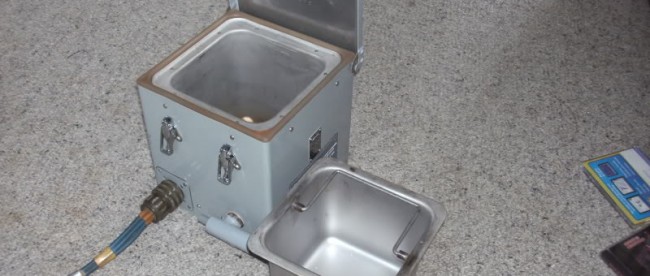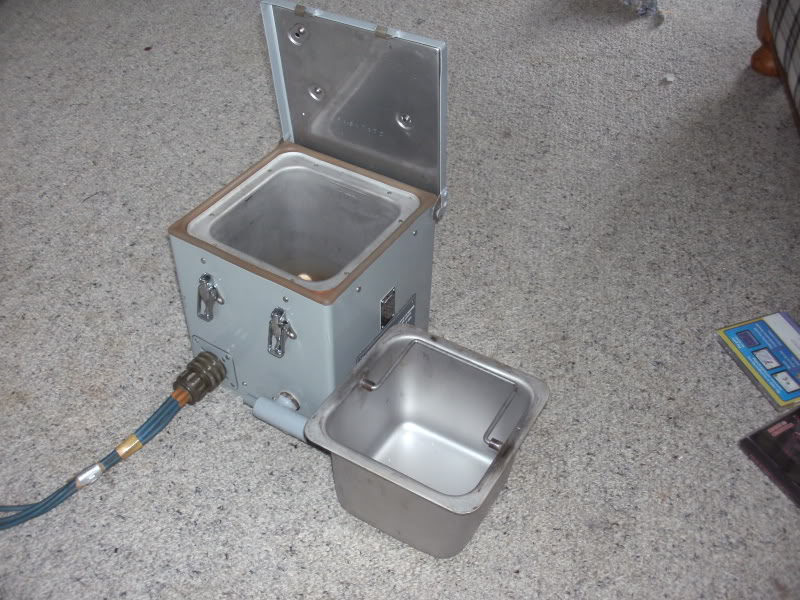Tanks for the Tea

The importance of tea to British culture is hard to overestimate. British drinkers imbibe 165 million cups a day — that’s about two and a half cups, daily, per person. But “now” is not always a good time to take a break and brew a cuppa. For example, it’d be absurd for a surgeon to take a break, mid-operation, for some Earl Grey; for a lifeguard to leave his or her post to make some chamomile; or for a tank crew to take a time out from a war to get a brew going.
Unfortunately, that last one happened — which is why today, British tanks come outfitted with tea makers. (Specially-designed ones, of course.)
A few days after the Allies landed in Normandy, France on what is now known as D-Day, the British 7th Armored Division was on its way from the landing point toward the German-held French city of Caen. Most of the division wouldn’t make it there. It’s hard to say what happened, specifically. The best first-hand accounts were from German tank commander Michael Wittman, whose report was quickly run through the propaganda machine — making the outcome look like a clear German win and devastating loss for the British. But we do know the following:
First, Wittman was stationed just outside the French town of Villers-Bocage, which the Germans (correctly) believed would be of strategic interest to the British. Second, Wittman’s tank battalion wasn’t in the best of shape — only about six of the usual twelve tanks at his command were in operational order. And third, when the British arrived at Villers-Bocage, Wittman wasn’t expecting them yet. Hoping against all odds that the enemy hadn’t spotted him yet, Wittman told the other tanks in his company to stay put, and the commander’s Tiger went off on its own.
It was a great decision. The British command had stopped off to meet and plan their next move, and the tank crews took advantage of the downtime — they left their tanks to brew tea. For Wittman, this window was all he’d need. As War is Boring explained, fifteen minutes into the battle, Wittman’s tank had taken out 14 British tanks as well as more than a dozen other artillery of various types.
What happened next at the Battle of Villers-Bocage is disputed and both sides claimed victory back home. But the lesson about tea wasn’t lost on British command: complacency in battle, even if it meant tea, was a bad idea. The point was driven home in right after the war. Per War is Boring, “in 1946, the British Medical Research Council published ‘A Survey of Casualties Amongst Armored Units in Northwest Europe’” which “found that 37 percent of all armored regiment casualties from March 1945 until the end of the war some months later were crew members outside their vehicles.”
But the tension between tea and tanks is hard to understate — it would be incredibly dangerous to make tea in the already cramped cabin of one of the war machines, as that would require starting a fire. At the same time, the data — and the results at Villers-Bocage — made clear the dangers of leaving one’s tank in order to make a hot beverage. So the British military got to work to find a solution, and what they came up with is called a BV, or Boiling Vessel, a more modern version of which is pictured below (via here):

The BV is a small device which gets its power from the tank’s electrical system — you plug it in, the heating element gets hot, and the water reaches the high-enough temperatures needed to make tea or other hot drinks (or, often, to warm rations). At no point is there an open flame, so tank crews don’t have to worry about where they left the fire extinguisher, and the water is contained in the box, so the odds of it spilling are pretty low.
Today, you’d be hard pressed to find a British tank without a BV. The Centurion tank, which the UK began using right after World War II and into the 1960s, was the first type of tank to come with a BV installed. Each British tank since the Centurion comes with a BV or its successor, the Cooking Vessel (CVs, naturally) comes with one, too. (The image above is actually a CV.) And according to Defence magazine (pdf), the British military isn’t alone here — many American tanks have BVs or CVs as well. The Americans, though, use theirs for coffee.
Bonus fact: The anti-tank mine tactics of World War II were often a cat-and-mouse game, and in one case, involved camel droppings. In the Northern Africa campaigns, German tank drivers would occasionally drive over piles of camel poop, superstitiously thinking that doing so would bring them good luck. The Allies found out about this habit and decided to use it to their advantage, camouflaging their anti-tank mines as camel dung. But the Germans caught on quickly (and the poop stopped being lucky, obviously) and started to avoid the piles of excrement. However, noting that already driven over piles were safe, the Germans continued to bathe their tank treads in the lucky glory of those pre-tested camel droppings. That turned out to be a bad idea, too. As Mental Floss explains, “the Allies caught on and began to make mines that looked like camel dung that had already been run over by a tank.”
From the Archives: Tanks for the Info: How the Allies used math to beat German tanks.
Take the Quiz: Can you name the beverage (coffee or tea) which is more popular in each country?
Related: An electric kettle. It’s kind of like a BV, only cordless and probably not approved for in-tank use. About $40, but if you want it in red, it’s about $50. That’s weird.
